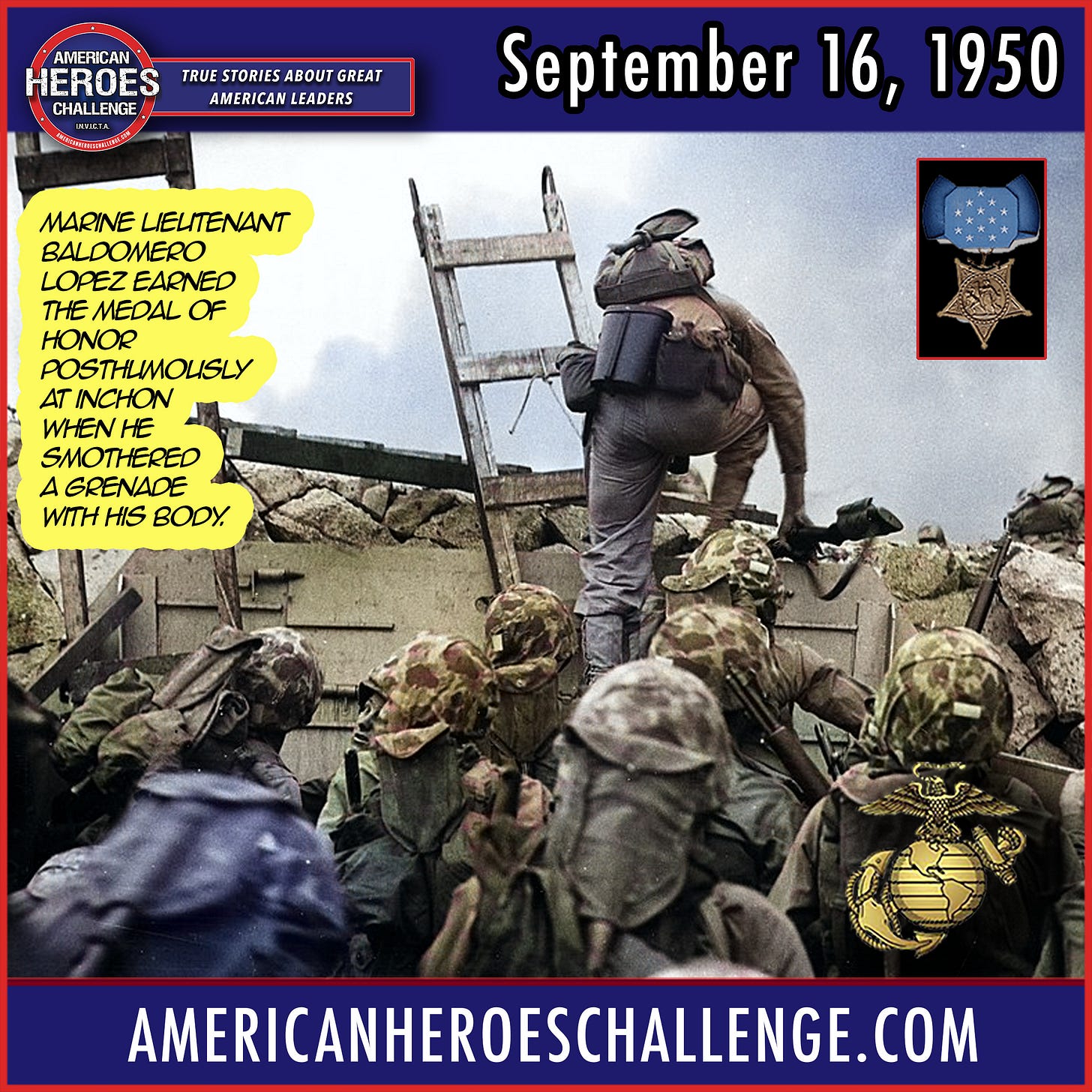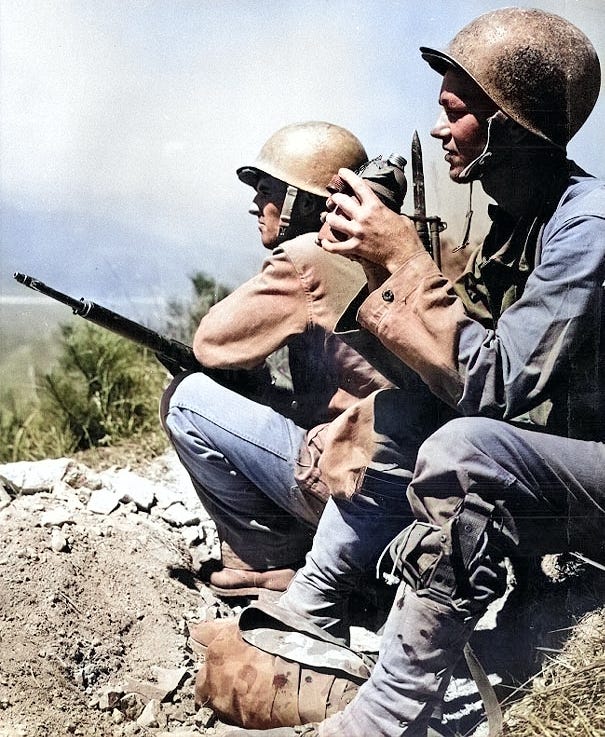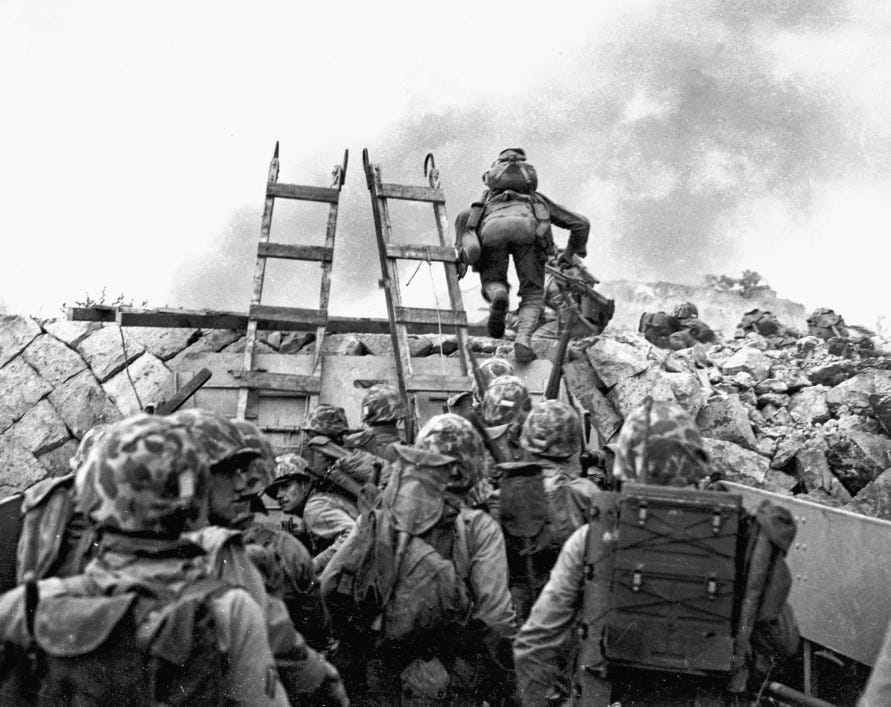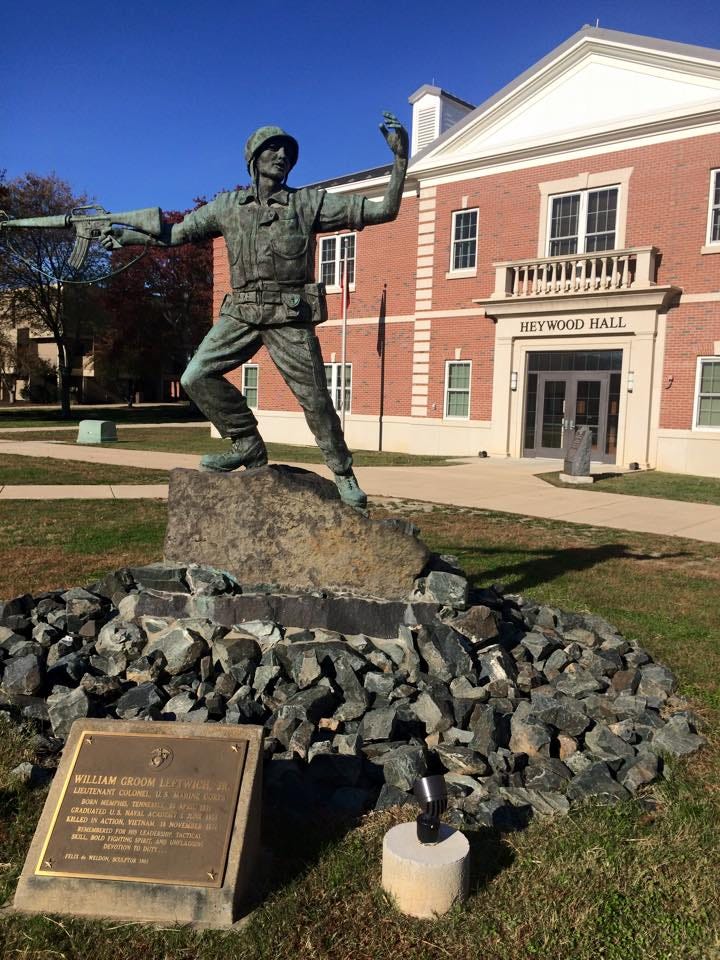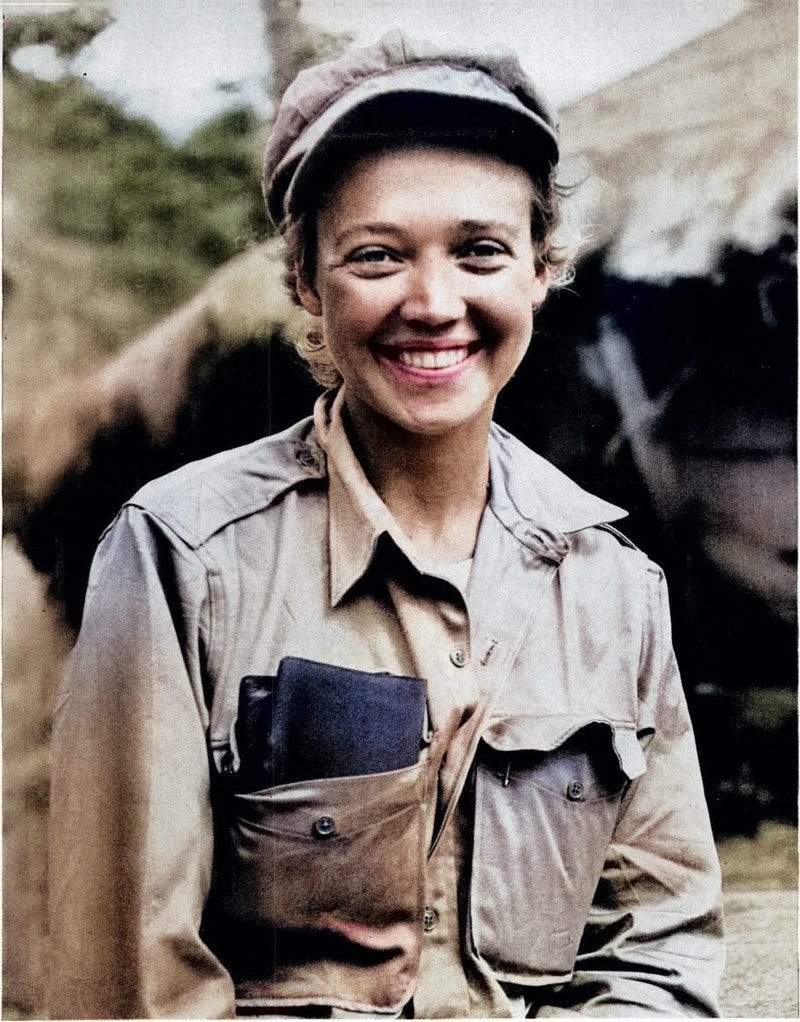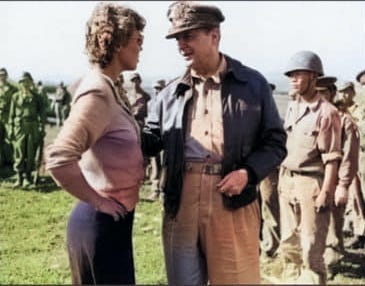
Baldomero Lopez & Marguerite Higgins
I learned something that I never knew about an iconic photograph of a Marine Corps leader and Medal of Honor recipient, Baldomero Lopez, who was killed in action on this day 73 years and one day ago.
Lopez was a twenty-five year old First Lieutenant when he went over the sea wall at Inchon on September 15, 1950. 1st Battalion, Fifth Marines landed as part of MacArthur’s plan to envelop the North Koreans from the rear and cut their supply lines.
From Tampa, Florida, Lopez joined the Navy in 1943 and served for a year before he was sent to the Naval Academy. He graduated in 1947 and became a Marine officer, serving in China and then at Camp Pendleton. (Warning, potential rabbit hole, but this a great article on Marines in China after WW2: https://shorturl.at/hkwZ3)
I am guessing that Lopez fought in Pusan, as 1/5 (Make Peace Or Die; great battalion motto! I love that it’s a statement not an exclamation) was part of the perimeter. Here are Marines overlooking the Naktong Rover in August 1950.
Lopez landed at Inchon and led his troops over the sea wall in this iconic photo. Moments later, he was hit by automatic fire. In his dying act, he swept a North Korean grenade under his body, smothering the blast and saving his Marines’ lives.
As a former Marine Corps infantry officer, this photo has always had a strong hold over me. It’s the defining leadership image - a lieutenant step forward, exposing himself and leading his Marines into the fight.
I only realized today that the photographer who got his shot was an amazing leader in her own right - Marguerite Higgins.
Higgins was a pioneering female war correspondent. She graduated from Berkeley and then Columbia Journalism school before going to Europe in 1944, where she witnessed the Dachau liberation and later covered the Nuremberg trials and the Soviet Berlin blockade.
In 1950 she became the New York Herald Tribune’s Tokyo bureau chief and then went to Korea when war broke out in June. General Walton Walker tied to order her out of Korea because she was a women, but MacArthur overruled him, saying, “Marguerite Higgins is held in highest professional esteem by everyone.”
I had a passing knowledge of Higgins, mostly for her strong hatred of communism. She ardently supported South Vietnam, recognizing that the overthrow of Ngo Diem came about through the Kennedy administration’s political pressure.
Higgins feuded with other Vietnam reporters, especially David Halberstam, whom she saw as “typewriter strategists” who rarely got into the field. Higgins was passionately anti-communist, having grown up in Hong Kong. She did far too young, in 1966
Honor and remember Baldomero Lopez and Marguerite Higgins.





